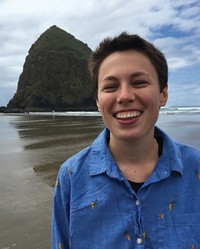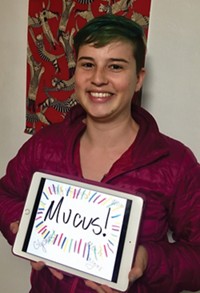Advertisement
Grab your lab coat. Let's get started
Welcome!
Welcome!
Create an account below to get 6 C&EN articles per month, receive newsletters and more - all free.
It seems this is your first time logging in online. Please enter the following information to continue.
As an ACS member you automatically get access to this site. All we need is few more details to create your reading experience.
Not you? Sign in with a different account.
Not you? Sign in with a different account.
ERROR 1
ERROR 1
ERROR 2
ERROR 2
ERROR 2
ERROR 2
ERROR 2
Password and Confirm password must match.
If you have an ACS member number, please enter it here so we can link this account to your membership. (optional)
ERROR 2
ACS values your privacy. By submitting your information, you are gaining access to C&EN and subscribing to our weekly newsletter. We use the information you provide to make your reading experience better, and we will never sell your data to third party members.
Environment
Burkina Faso
In this landlocked West African country, chemist Mouhoussine Nacro hopes to preserve centuries-old traditions
by Kenneth Moore
April 25, 2011
| A version of this story appeared in
Volume 89, Issue 17

In a village in Burkina Faso, Mouhoussine Nacro watched nervously as a textile artisan slipped some of the dye that he was mixing into his mouth. To Nacro, a natural products chemist, the observation was a bit unsettling. But to the artisan, it made perfect sense. And then it dawned on Nacro: “When I thought about the chemical aspect of what he was doing, I realized that he was checking the pH,” which is important for dye adhesion and color.
Nacro, a professor of chemistry at Ouagadougou University and one of only two American Chemical Society members in Burkina Faso, travels this landlocked country in West Africa to document the craft of local artisans. “A lot of traditional know-how is disappearing,” Nacro says. Traditional products, such as home-dyed clothing, are being replaced by synthetic goods. So, after documenting artisans’ crafts, Nacro goes to the lab to better understand dye extraction, production, and application. He then looks at ways to innovate or improve these age-old traditions through chemistry—adjusting the pH, temperature, or extraction technique, for example.
Having grown up in Burkina Faso, Nacro is intimately familiar with the region and its people. But when he was studying in the 1960s, there were no universities in the country, so Nacro pursued a bachelor’s in biology from the University of Dakar, in Senegal. He went on to earn a Ph.D. in physical sciences from the University of Nancy, in France. In 1977, he returned to Burkina Faso as a professor at Ouagadougou. From 1982 to 1984, Nacro was a visiting biochemist at the University of Georgia, Athens.
When he returned to Ouagadougou, Nacro was “without contacts and without scientific information,” he says. “You can’t do research without knowing what’s happening in your field.” He joined ACS to stay connected to his U.S. colleagues. At the time, one year’s membership cost him a month’s salary.
Nacro also subscribed to the Journal of Agricultural & Food Chemistry and the Journal of Chemical Education to keep abreast of advances in his field. These days, some students at Ouagadougou refer to his journals for their own research. Upon graduation, many chemistry students find employment as teachers or in mining companies in the region, and a few go into the health field to research plant-based drugs, Nacro says.
Conducting research in Burkina Faso is challenging. Reagents can take three to four weeks to arrive after ordering, and equipment may take several months. Accessing information online can also be difficult. “It takes hours to send a document over e-mail,” Nacro says. Lack of funding is another major constraint, he adds. Most research is funded by grants from philanthropic and international development organizations; the Burkina Faso government provides little money for research.
Disease adds to the strain on resources. When a coworker is out sick for a few days, it’s not a cold or the flu keeping the researcher at home—it’s usually malaria, Nacro says. “It’s a common reason to be out,” and it’s very incapacitating, he adds. “Your colleagues must take care of whatever research you were doing.”
These difficulties don’t stop Nacro from conducting research and maintaining an active role in scientific communities. This year, he is on the scientific committee for the International Symposium & Exhibition on Natural Dyes, a biennial conference that brings together industry and academic researchers from around the world. The meeting is being held this week in La Rochelle, France.
Nacro has also been involved in Burkina Faso’s government: He has served as the country’s ambassador to Canada, as a member of Parliament, and as the minister of secondary and higher education and scientific research.
Even with the impressive array of research duties and offices held, Nacro has also raised a family with his wife, Rosette. He didn’t try to sway their four children to follow in his chemistry footsteps, he says, “because it’s so difficult to do chemistry here; it’s not always rewarding.” But for Nacro, chemistry is the way to solve problems, help people, and improve lives in Burkina Faso.



















Join the conversation
Contact the reporter
Submit a Letter to the Editor for publication
Engage with us on Twitter